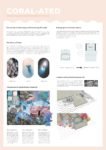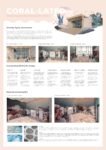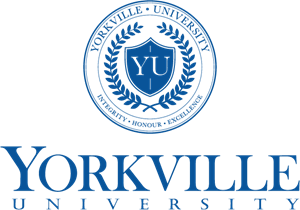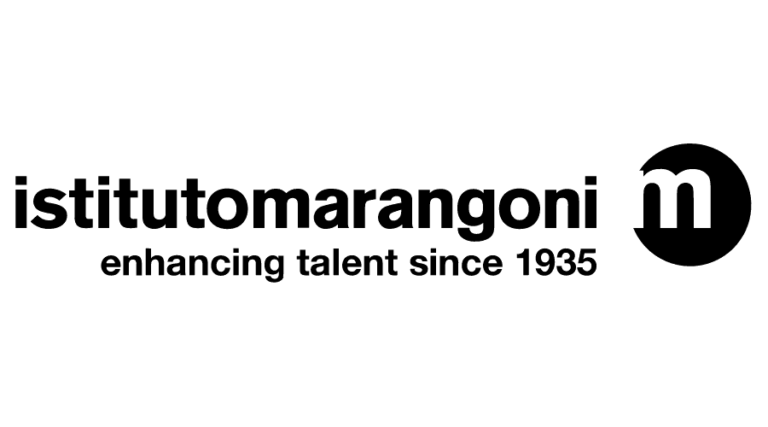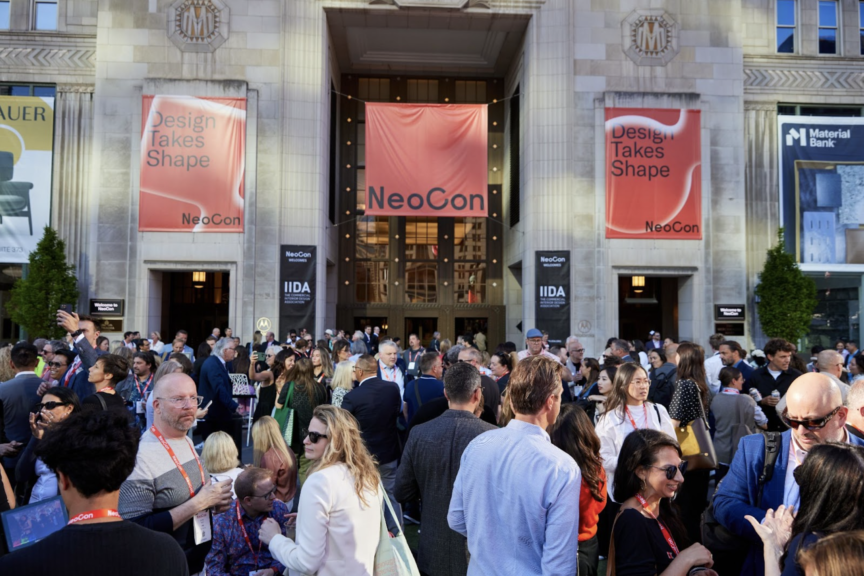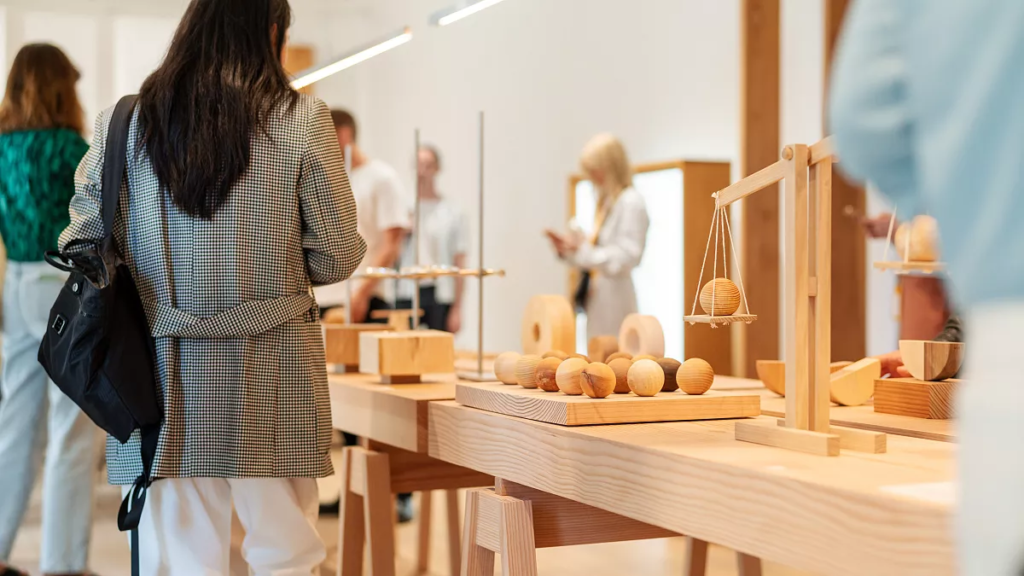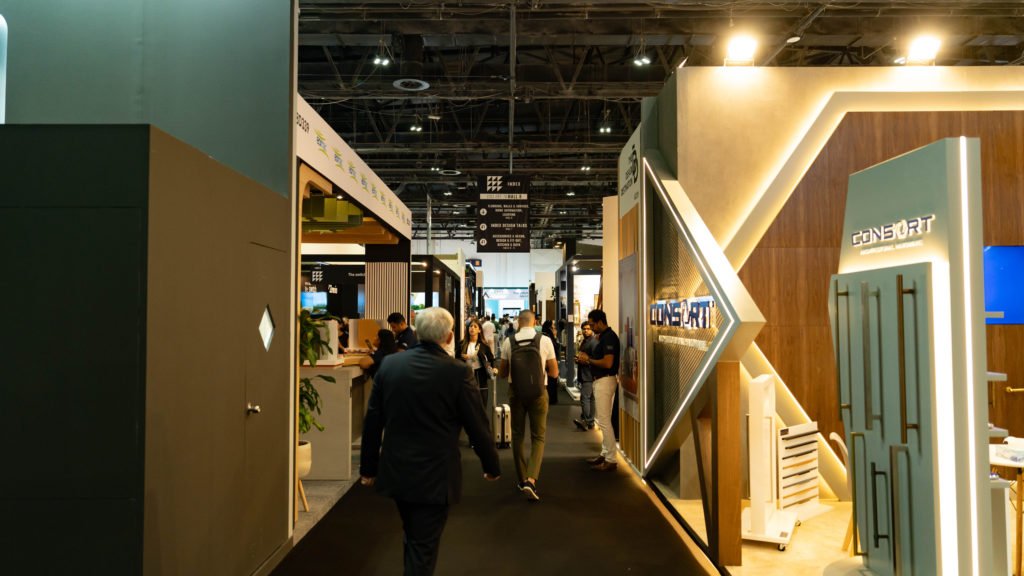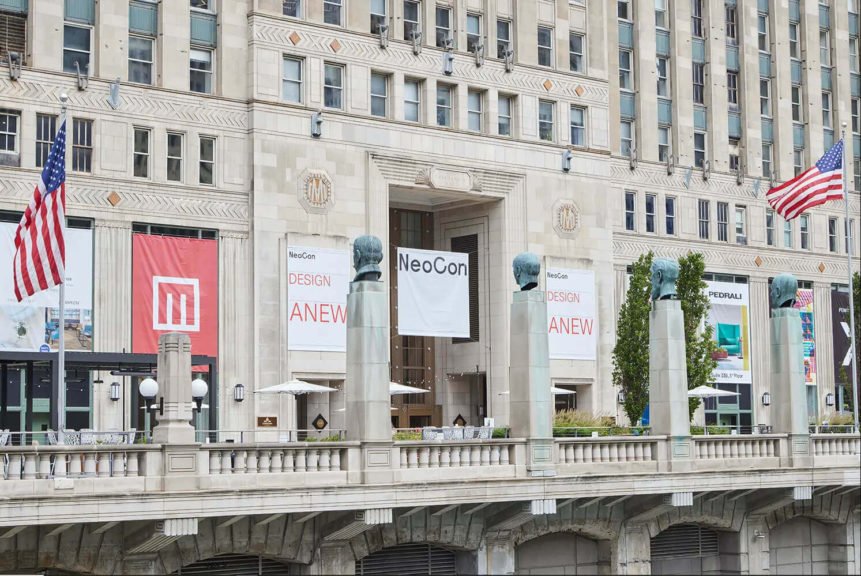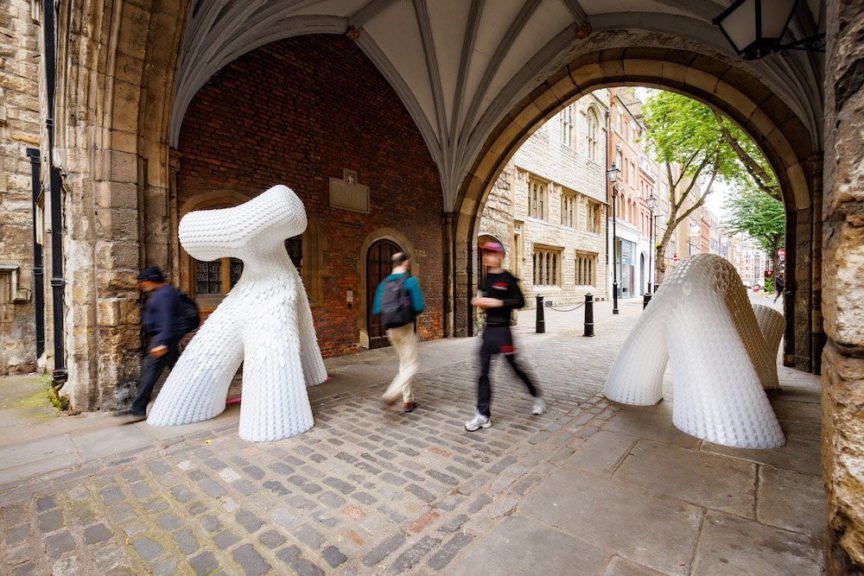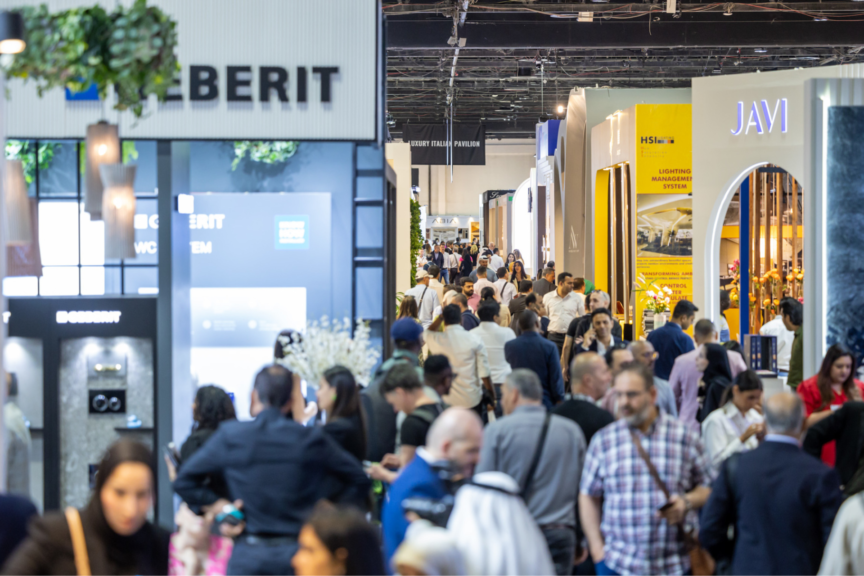Almost every working professional has received a knacking reality check at the beginning of their career. A core reason is how obscure the notion of the working world is to students. In the past decade, educational institutions, especially those minting young designers, have acknowledged the gap between degree curricula and professional practice.
In this light, extra-curricular activities such as Gensler’s DE&I Competition are pivotal. They familiarise students with the industry’s nitty-gritty and instil professionalism in them. The concurrent theme of the competition would also sensitize future designers towards Diversity, Equity and Inclusion. “All Together Now”, the 2023 edition, saw as many as seven universities participating for the winning title.
On their part, Gensler Middle East, known for its fair and unbiased company values, contributes to societal change at the root level. Walk into Gensler’s office at the illustrious Alserkal Avenue, and the propitious vibe of the lofty space will enrapture you. The team is always ready to help and is polite even in the face of looming deadlines. The aura hints instinctively that the young minds would be in capable hands.
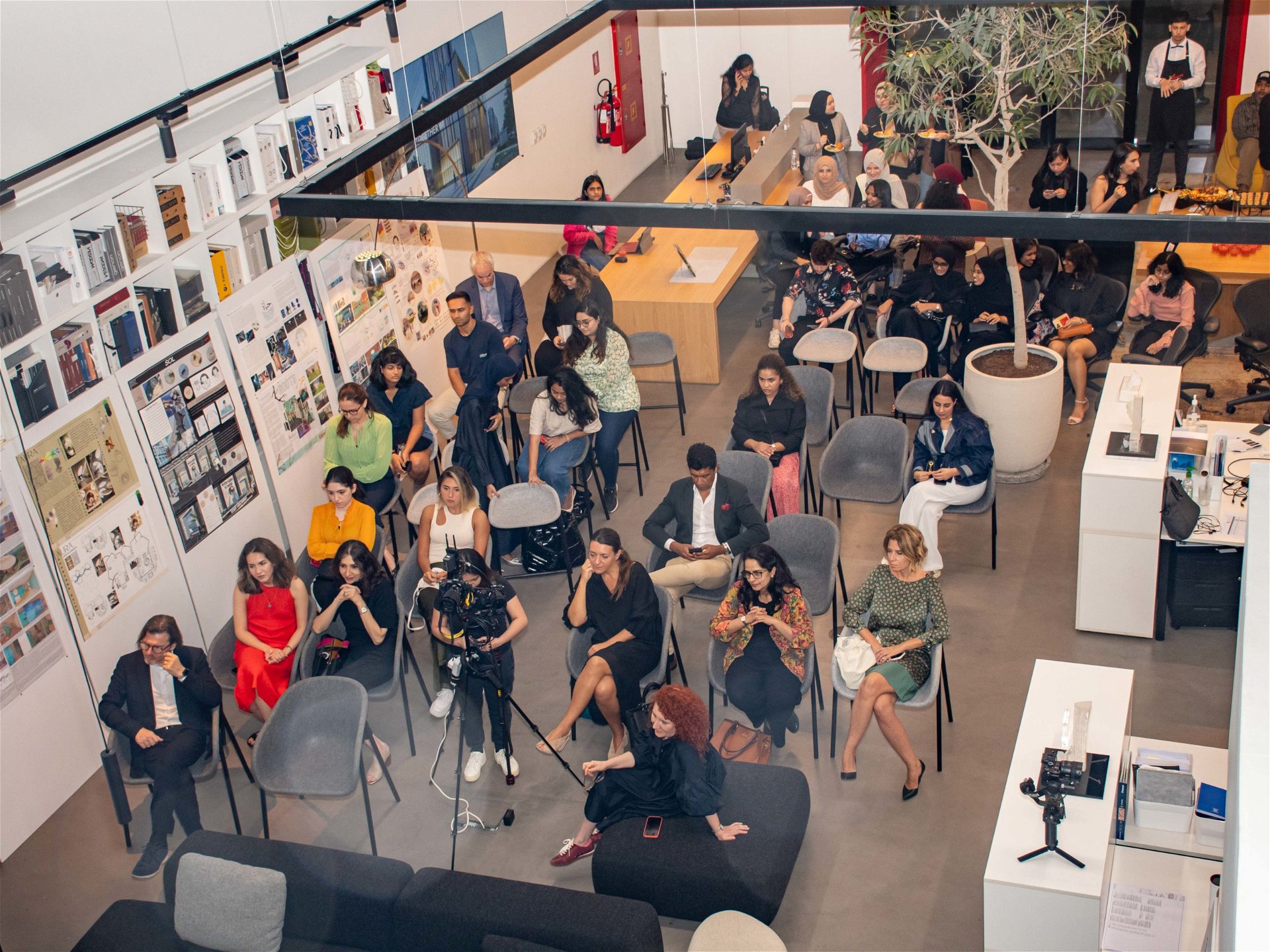
The Challenge
The brief required students to work on ‘Inclusive Environmental Graphic Design.’ They were tasked with simplifying wayfinding, optimising accessibility and curating an immersive experience.
This time, Nakheel, a reputed property developer in the region, partnered with Gensler to advocate the cause’s gravitas. The site was a hypothetical Eco Visitor Center on the Dubai Waterfront with laboratories, cafes, exhibition areas and more. Senior leaders Rick Broene and Rama Sonmez from Nakheel explained its relationship to the Jebel Ali Marine Sanctuary. The session also addressed the contextual ecology of gazelles and turtles.
A rigorous training schedule prepared students before they plunged into the design problem. Gensler Middle East’s Stephanie Kinnick addressed the distinction between Universal and Inclusive Design. Diane Thorsen and Donald Cheng, too, decoded applications of Environmental Design. The concept was also elucidated by leaders from the practice’s Singapore and Japan branches.
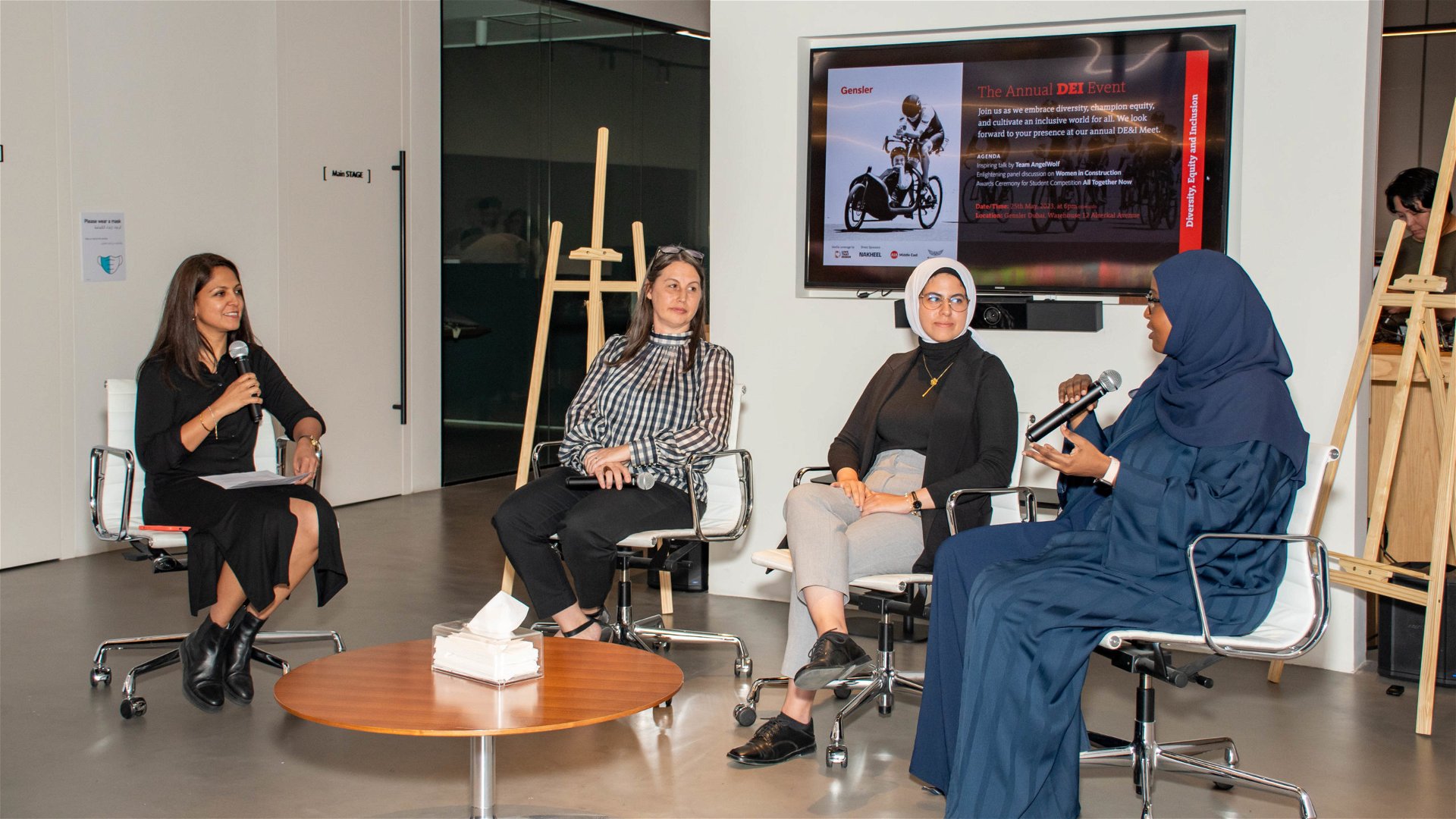
Students across the seven universities were divided into 17 groups. Disparate backgrounds and experiences aimed to inspire thought-provoking conversations, creativity and expression. Every Gensler mentor was in charge of at least two groups. The final score would conjugate points from university professors, Gensler mentors and individual self-assessments. The design’s effectiveness, teamwork and putting ideas across with brevity were crucial to secure a win.
The teams navigated the preliminary, awkward phase and developed camaraderie rather quickly. In the eventful six weeks to come, they strived to deliver their best.
The D-Day
On the day of the final presentations, the tension in the air was palpable. The bittersweet feeling of reaching the end of a design module coursed throughout the presentation hall at Gensler. One after the other, students presented their projects to explain their approach to DE&I, the enactment of their concepts, and the corollary output. Mentors of each group specified the team’s strong suits and described the plan of action.
As the student presentations progressed, the subtle spike in the clamour and chatter was telling of their relief. The day concluded with the poignant and eloquent Diane Thorsen’s address. She emphasised the importance of DE&I-centric measures in design and the onus on present-day designers to pass the baton.
The Awards Night
A few weeks after the final presentations, the Gensler venue again saw a full house. The delirium of pulling off yet another successful edition of the DE&I Competition was infectious. Finger foods and refreshing mocktails further livened the fete. One could easily spot who the mentors were because of the wide, pride-infused smiles plastered on their faces.
The program kicked off with a heartfelt story about the Watson family, aka ‘Team Angel Wolf’. Nick Watson, father to Rio, a 20-year-old with 1q44 Deletion Denovo Syndrome, narrated their tryst with inclusion. The doting father shares the love of speed with his children, which is the secret to their clannish bond.
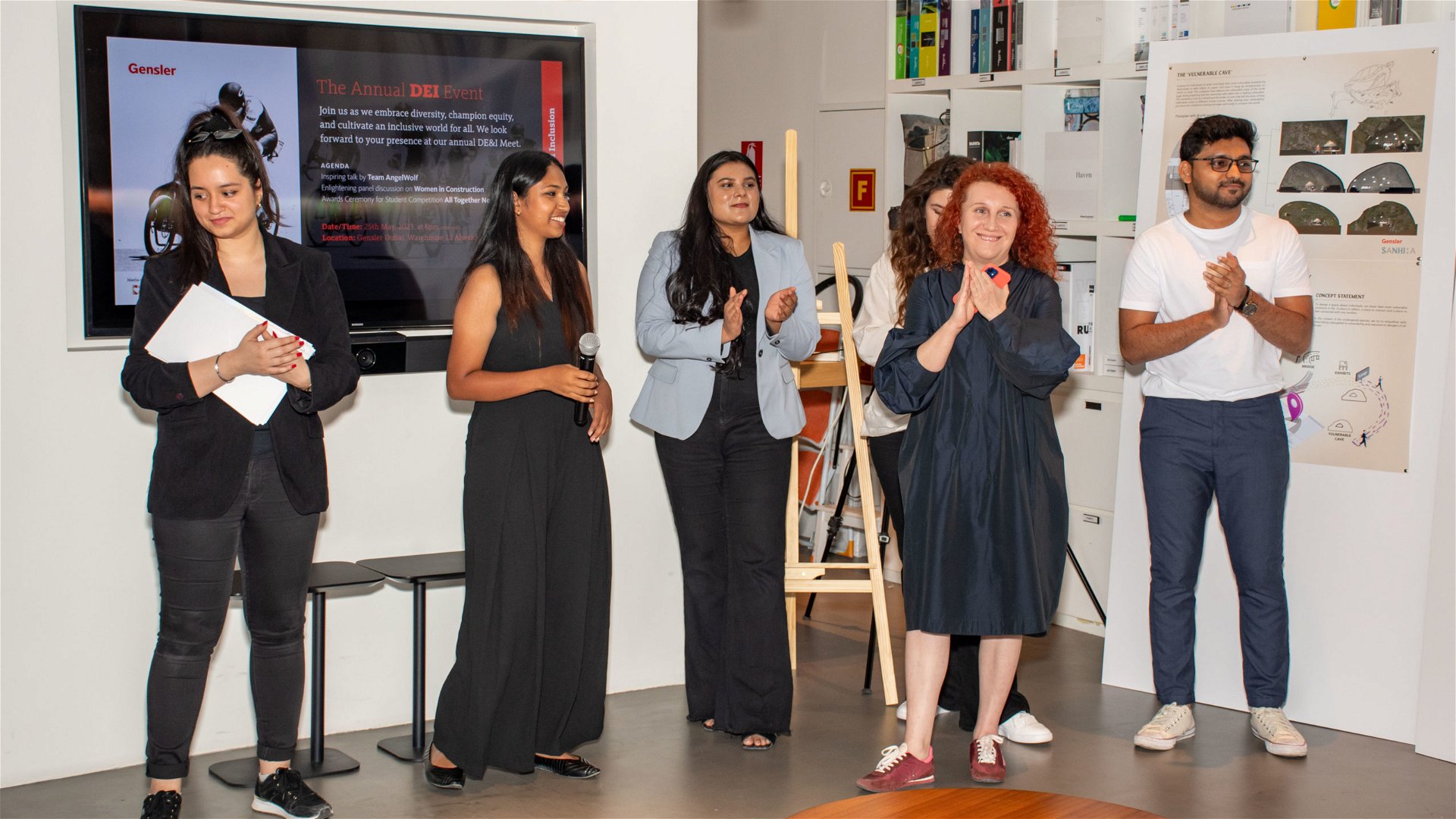
The most touching recount was the first time Nick entered a triathlon with Rio. Nick was cycling with Rio lodged in a carrier in front of him during the race’s last leg. The journey so far had been taxing and full of hurdles. As Nick’s feet pushed the paddles, he wondered if he was imposing his dreams and aspirations on his son. He couldn’t help but introspect; was he queuing his own wishes over his son’s comfort? He had almost made up his mind to never attempt a go at this again. Right then, Rio looked up at him and uttered, ‘I love you, Dad’ before cheering him on to pick up a brisker pace.
Nick heaved a sigh of relief; it was as if a constriction in his chest had finally been freed. All exhaustion vapourised, and the duo finished the race with renewed fervour. Since then, along with his daughter, Tia and wife, Delphine, Team Angel Wolf has been on a mission to raise funds to improve the conditions of disabled people in remote areas such as Pakistan, Bangladesh and Africa. The family also holds some Guinness World Records and propagates their vision via #RideWithRio.
Team Angel Wolf’s moving journey and Rio’s presence at the event were momentous to the purpose of the competition. In that instance, it dawned upon people that DE&I is not a concept merely; it is a reality for a part of the world population.
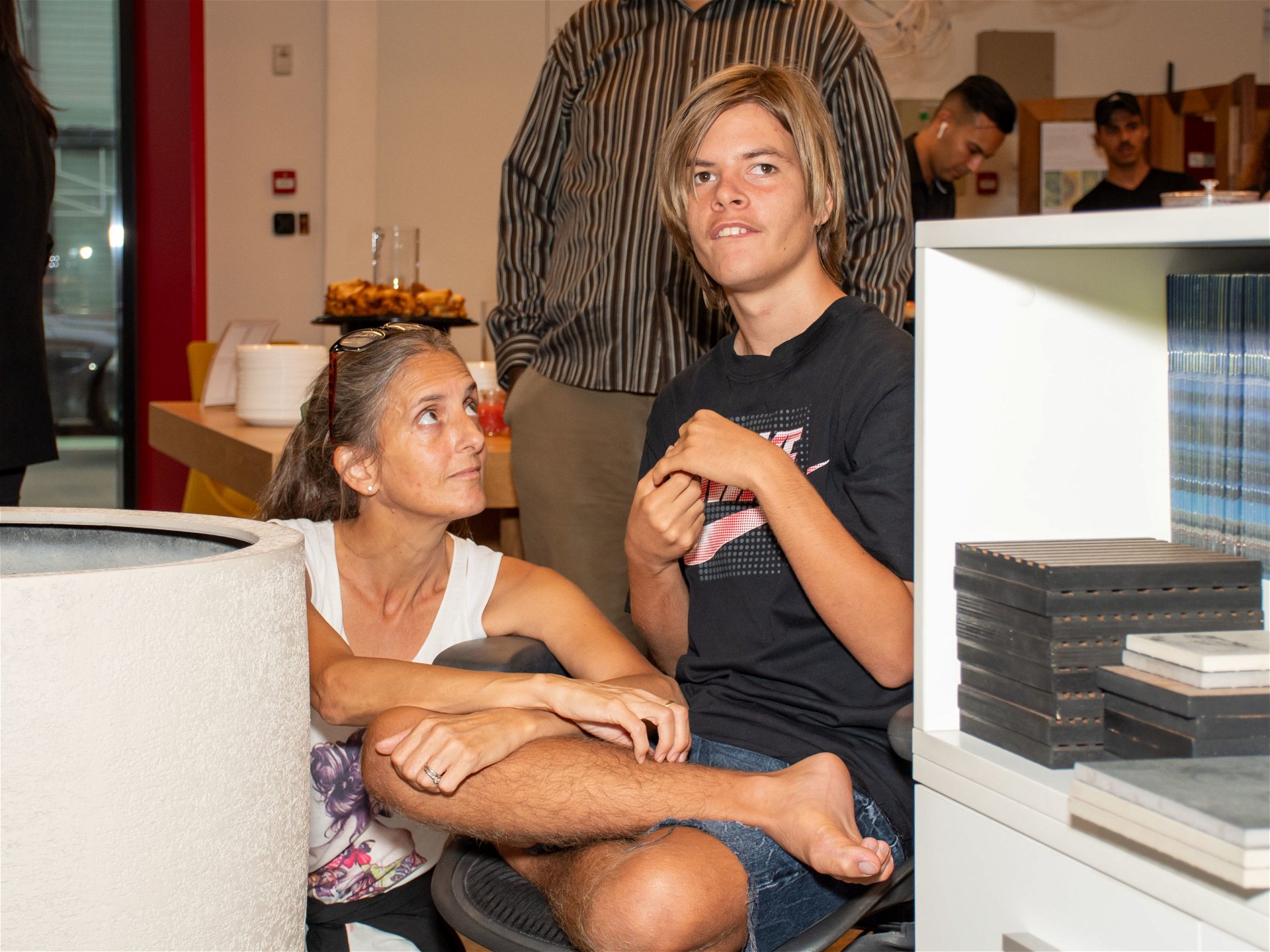
Finally, the most anticipated moment had arrived. The winners of the Gensler DE&I Competition were moments away from being revealed. The 3D-printed trophies, conceived in-house by Gensler as a symbol of technological and sustainable development, were at the cusp of finding new homes. Four teams had managed to bag awards – two for Best Design and DEI Story, one for Best Collaboration and one for Best Innovation.
Best Design and DEI Story
Group 2, In a Pearl Shell
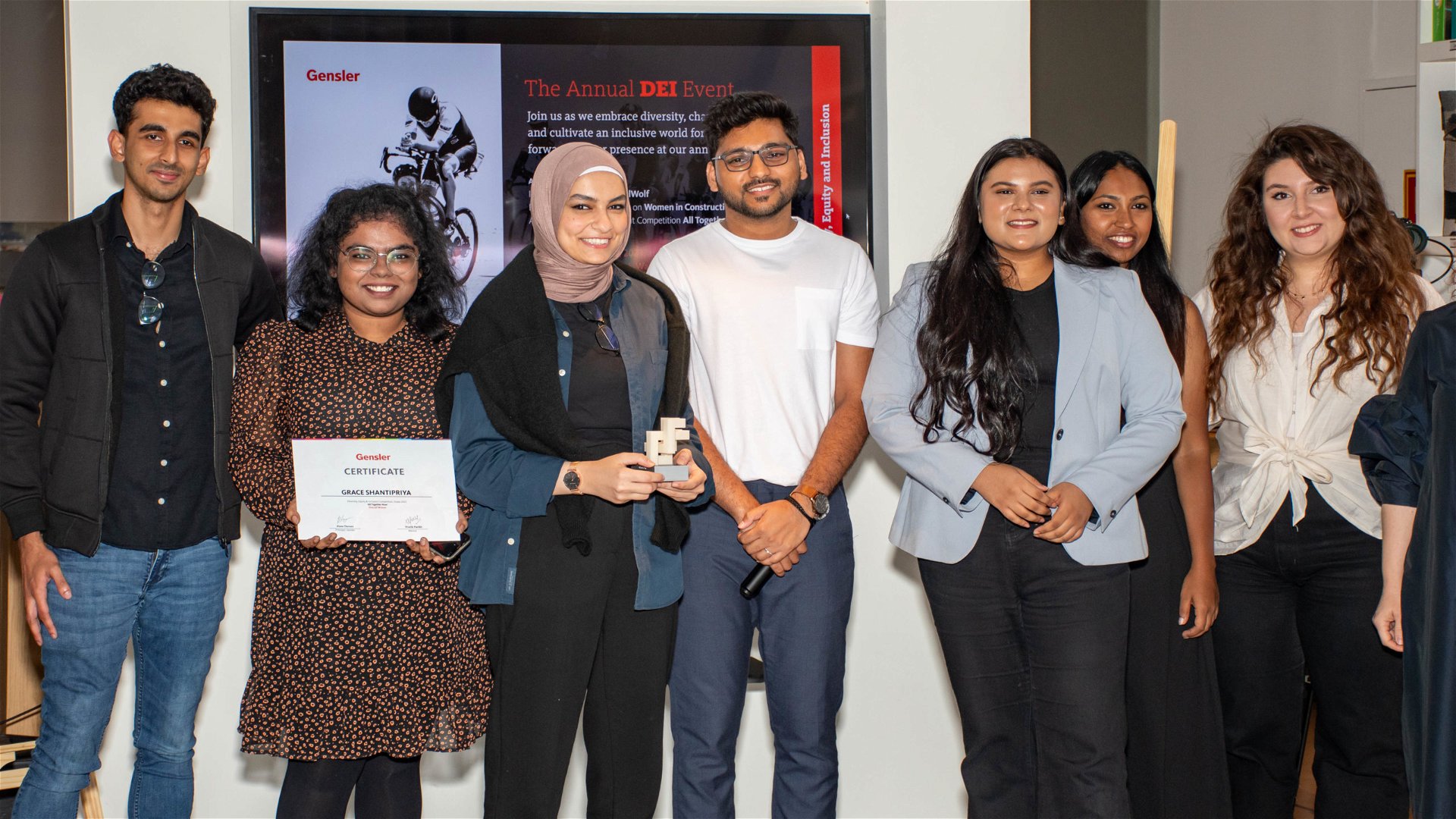
Mentor: Vrunika Parikh
Mentees: Grace Shantipriya from Manipal University, Manar Ahmed from Abu Dhabi University, Thasneem Abuthahir from American University of Dubai, Tania Sheikh from Yorkville University.
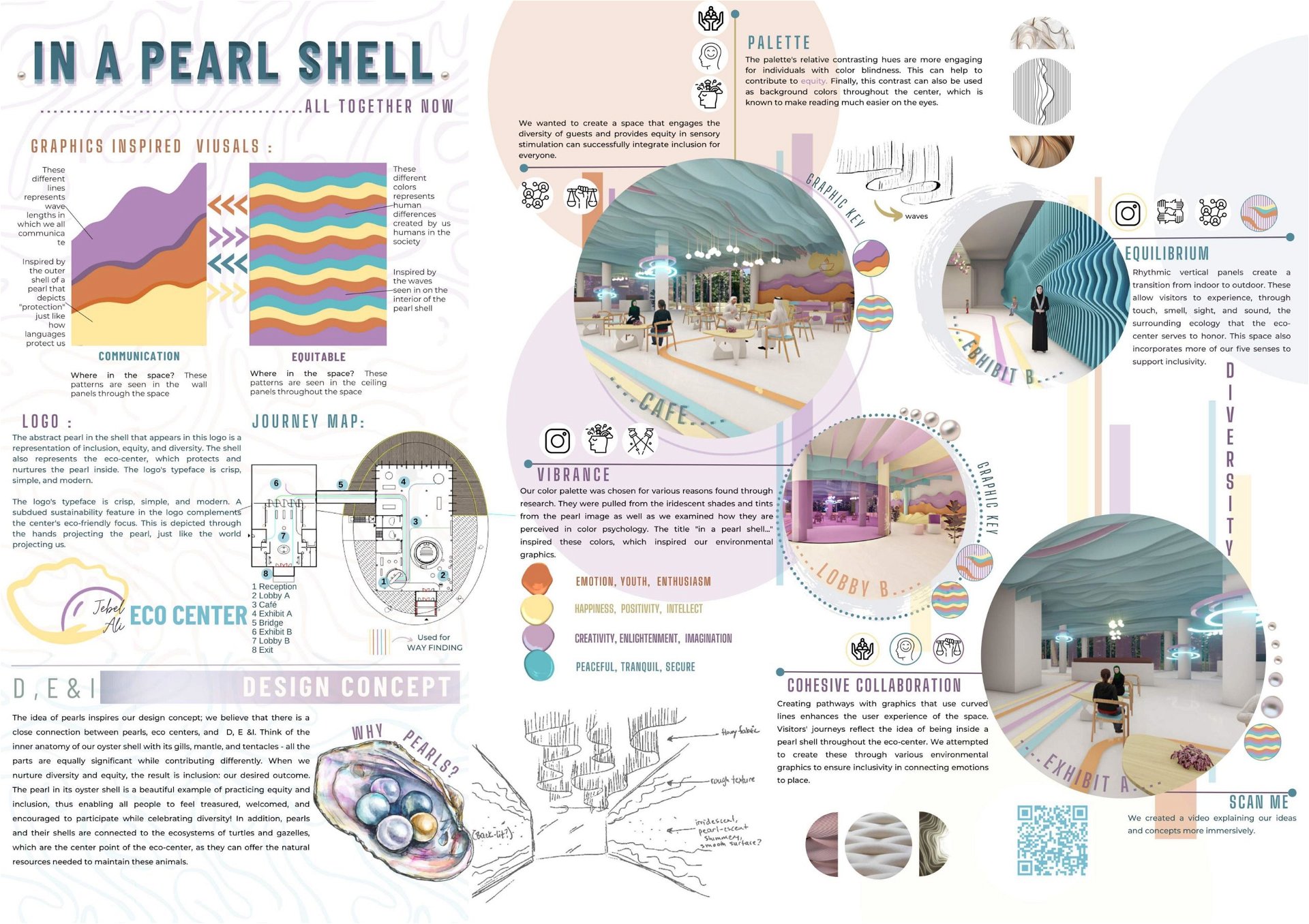
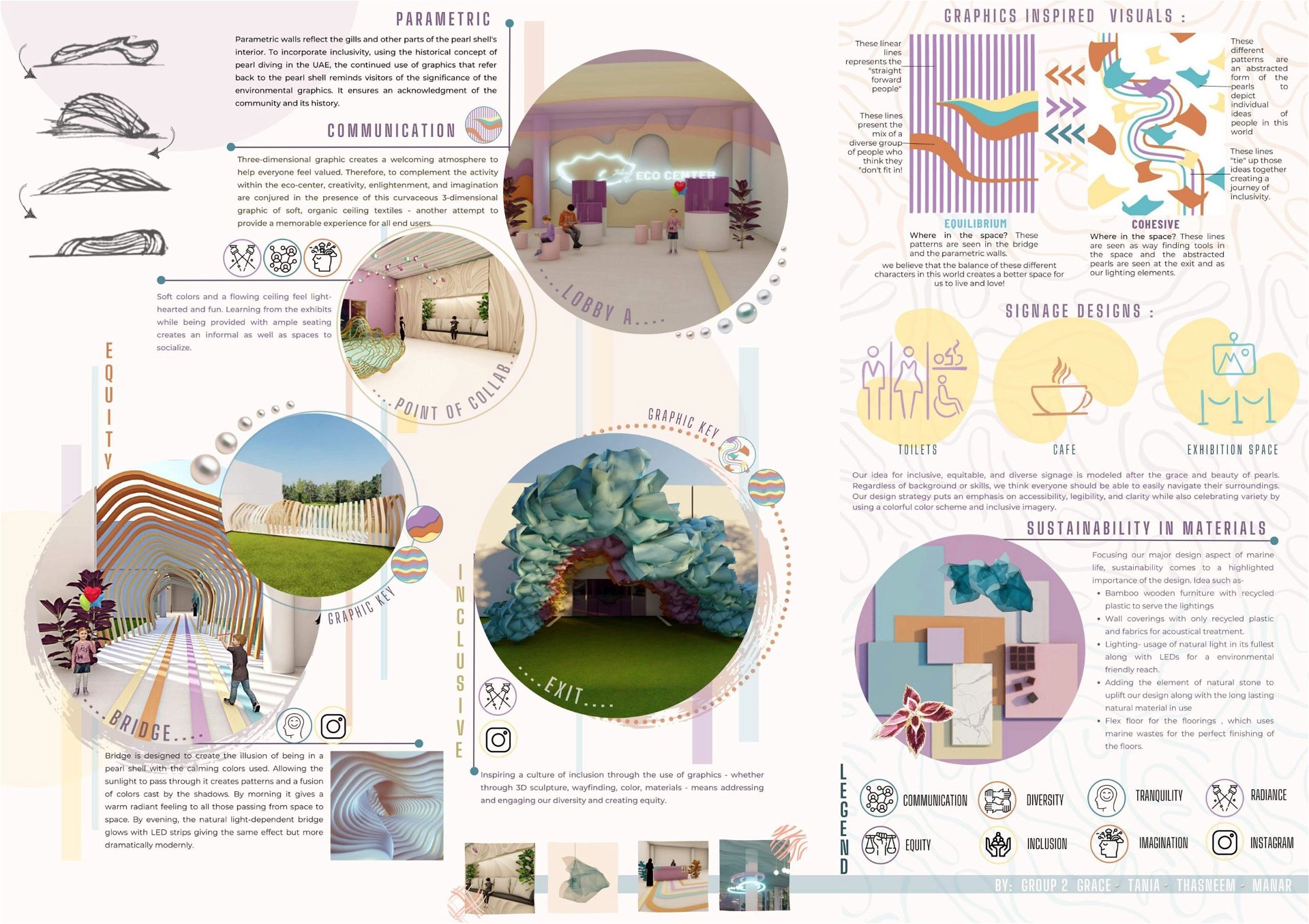
Who doesn’t like pearls? Especially when shades as opalescent as the precious mineral deposits are used to garb interiors. Group 2 drew parallels between how various parts of an oyster (tentacles, gills and mantels) play a conspicuous role in forming pearls to diversity amongst the human race. Participants leveraged colour psychology to demarcate zones and employed patterns such as concentric waves and rhythmic curves in their rendition of the Eco Visitor Center to win the judges’ favour.
Best Innovation
Group 14, The Invisible Thread of Connectivity
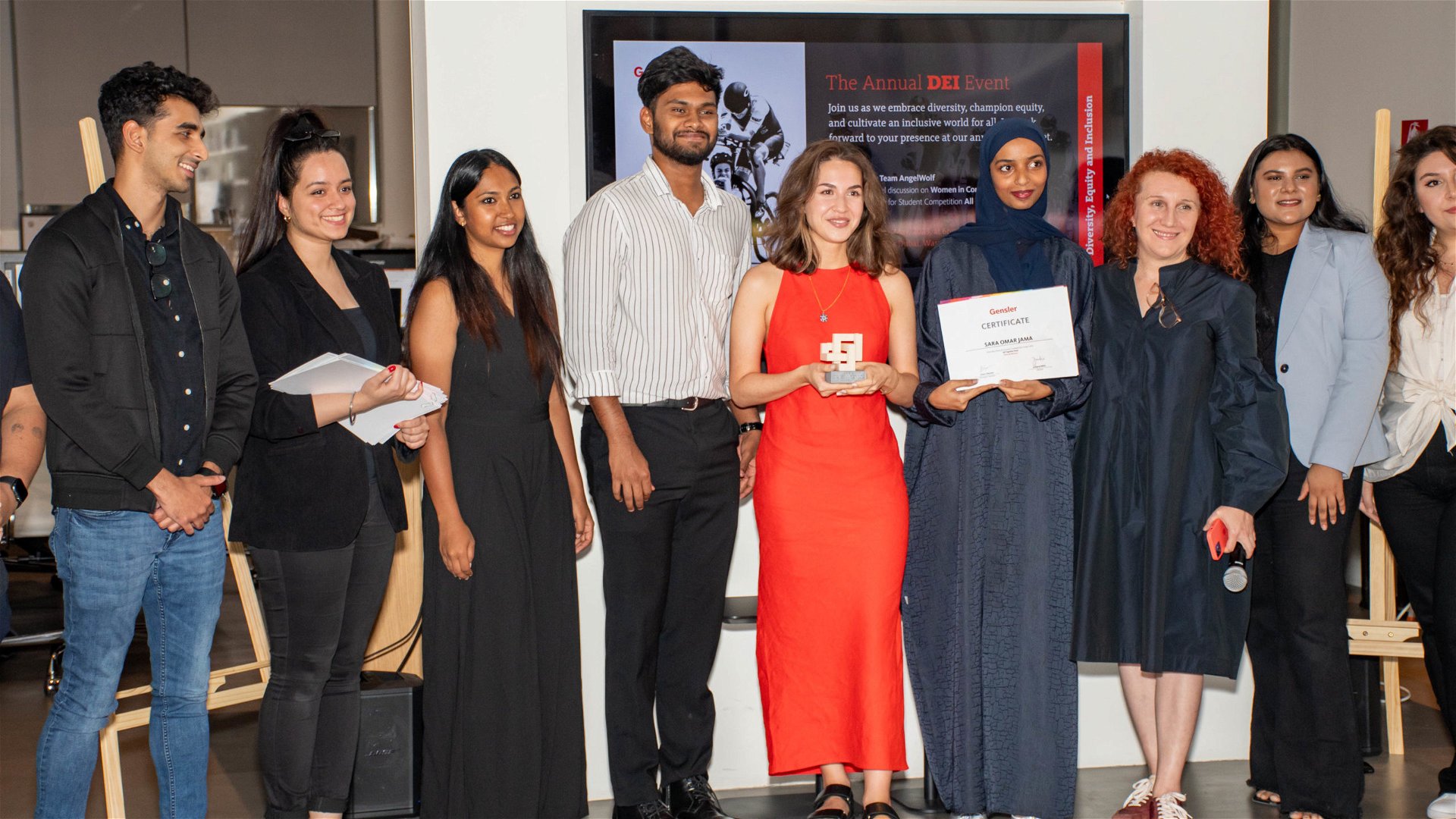
Mentor: Julijana Mitic
Mentees: Sara Omar Jama from Ajman University, Leyli Hudayberdyyeva from Istituto Marangoni, Dana Mohammed from American University of Dubai, Goutham Chandra Javagi from Yorkville University
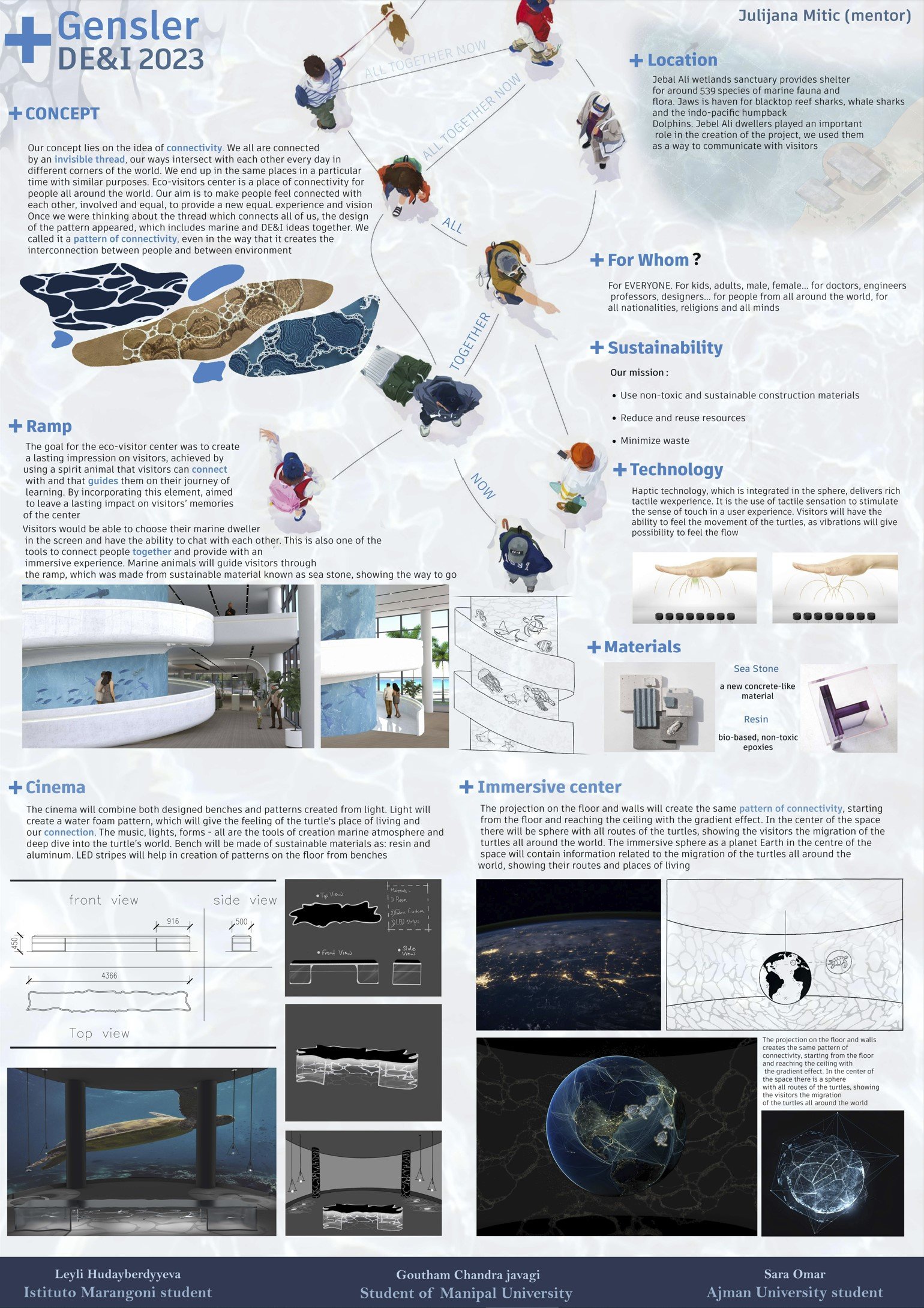
The present millennium has witnessed technology morphing into its most intuitive state. Even senior citizens learn to operate gadgets with very little help. Technology binds humans across boundaries, and Group 14 orchestrated their design around this ace. Haptic sensations, digital screens, interactive wayfinding, and considerate provisions such as ramps gave rise to an Eco Visitor Center focused on connectivity, not just between humans but also marine life.
Best Design and DEI Story
Group 7, PIXELS
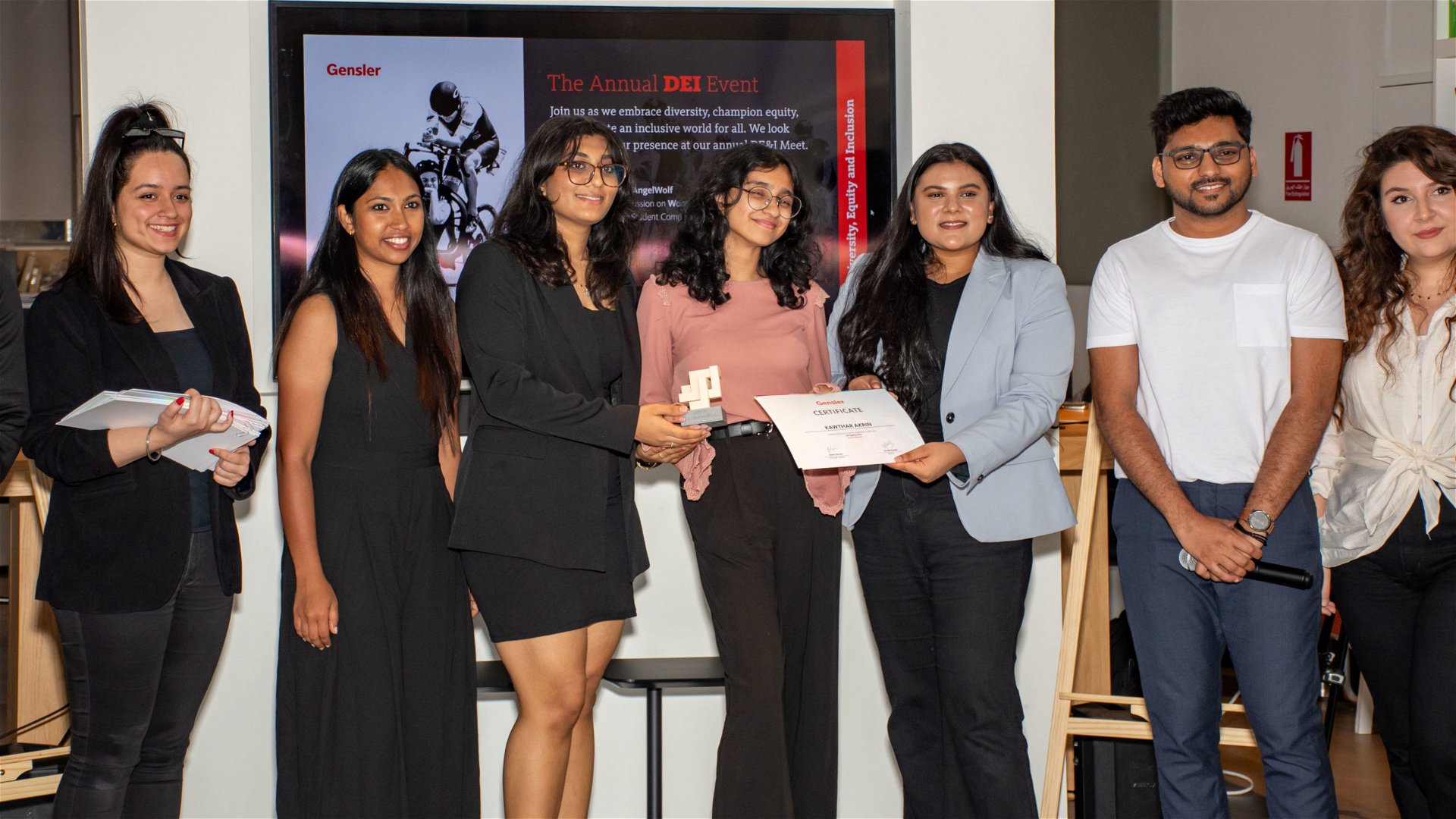
Mentor: Vrunika Parikh
Mentees: Radhika Arvind Kheni and Hannah Ann Danny from Manipal University, Kawthar Akrin from American University of Dubai
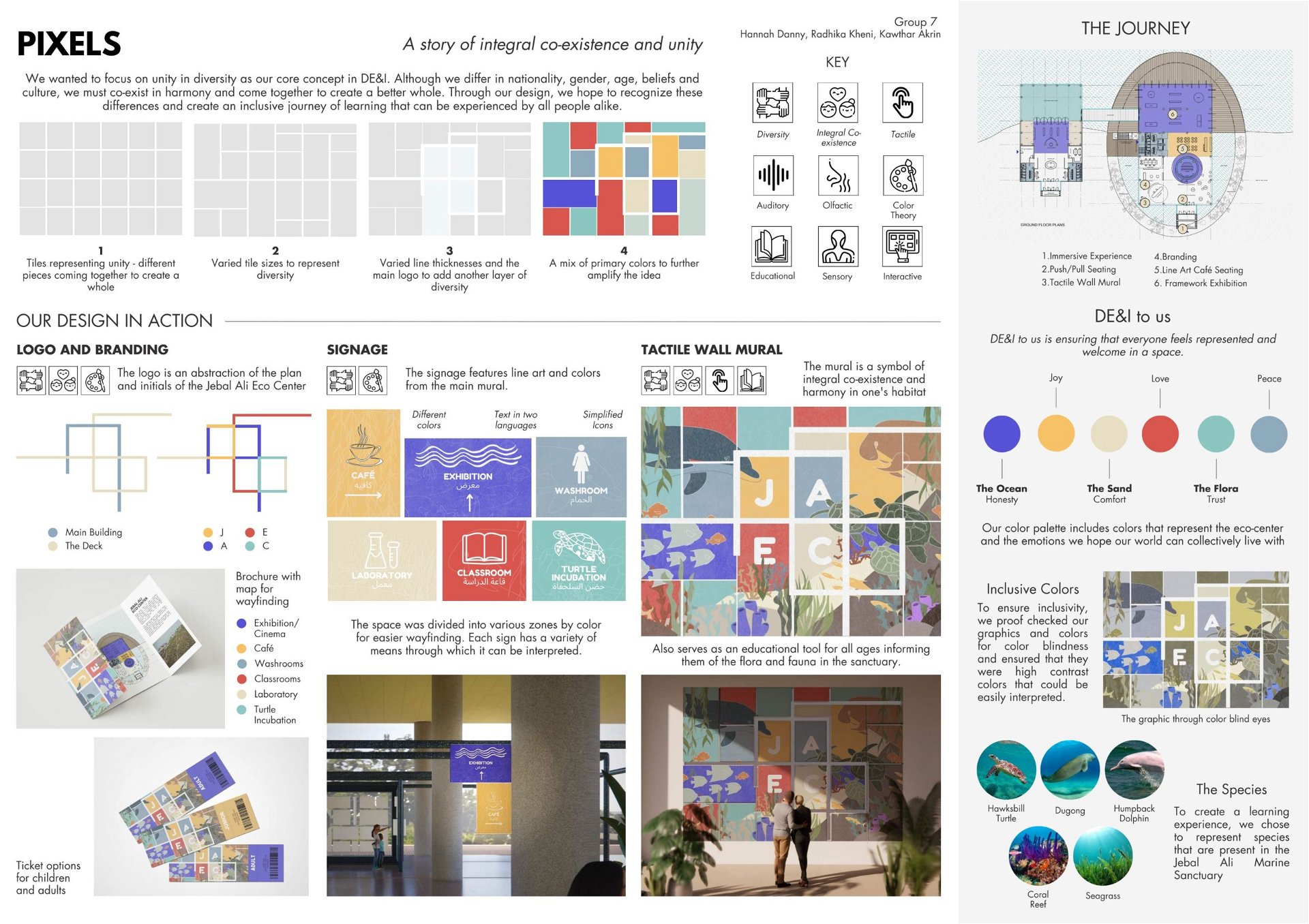
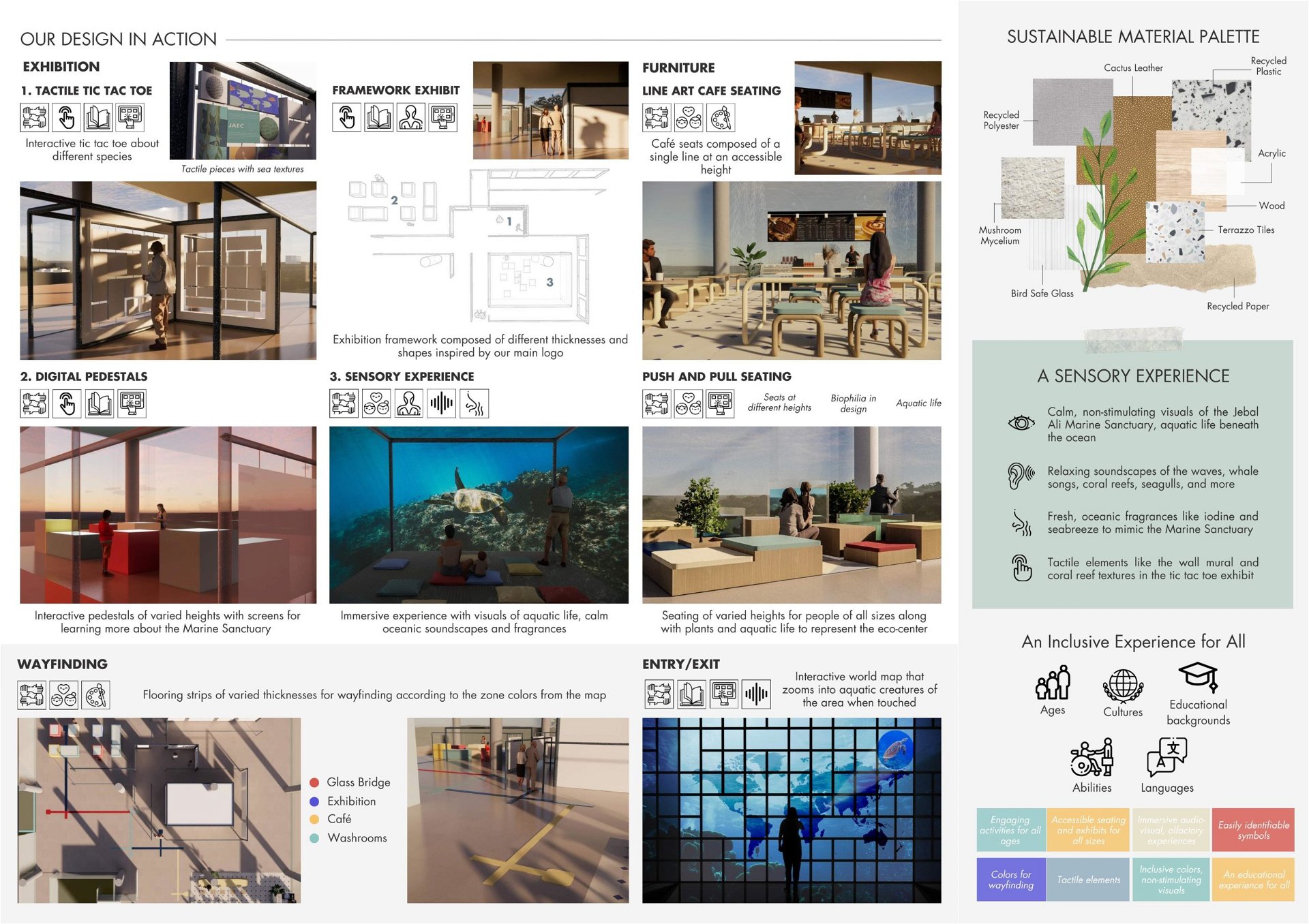
Pixels are units of imagery; for Group 7, it was a fractal of their zonal activities but with a twist. To depict that it’s okay to deviate from norms, participants moved away from following a grid to station the pixels. Sensorial experiences were paramount to the design. The seating design, material palette and branding of the Eco Visitor Center aimed to represent and alleviate boundaries among humans. It revealed the consciousness developed amongst the team members towards the concept.
Best Collaboration
Group 4, Coral-ated
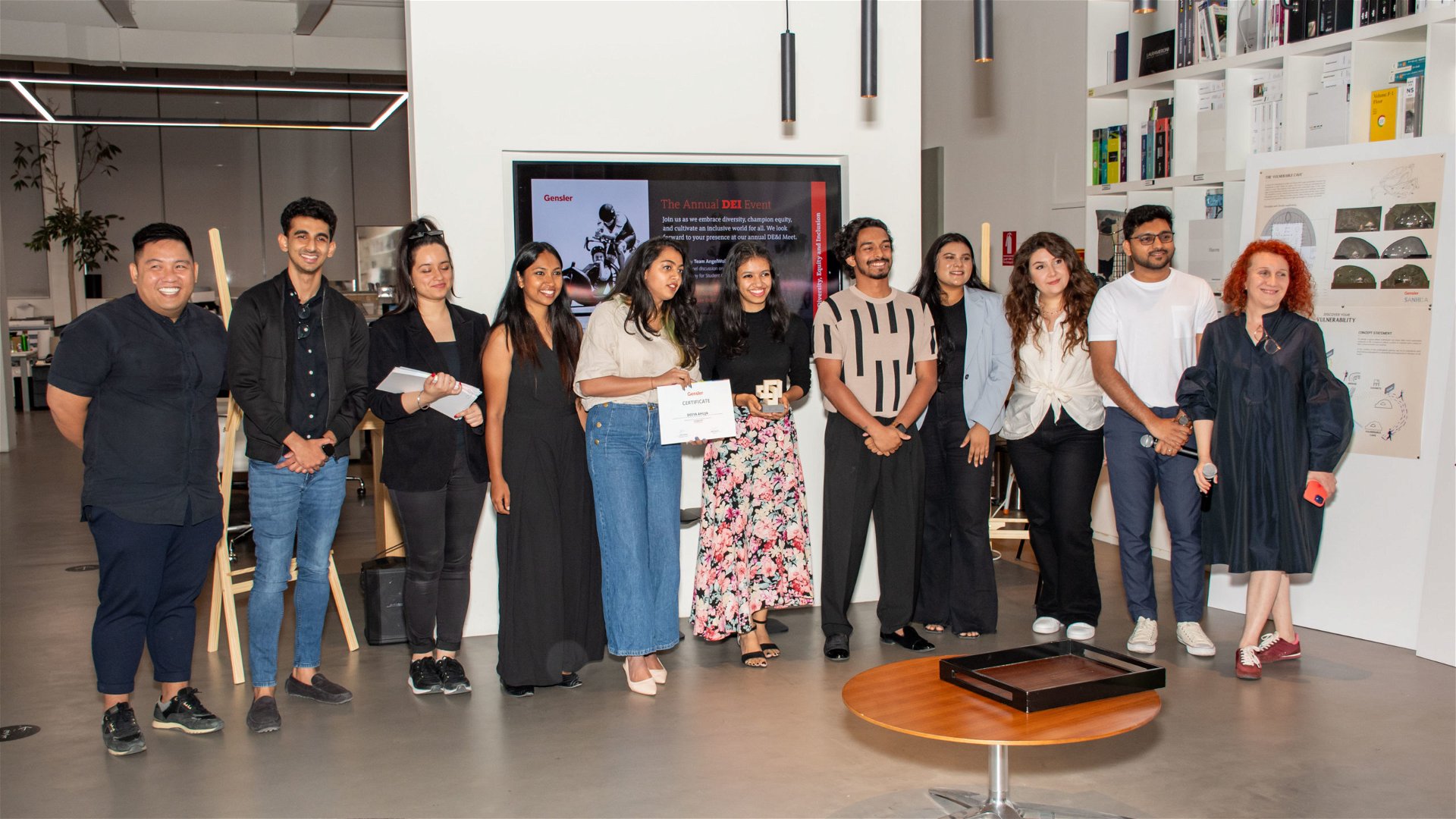
Mentor: Nigel Rosario
Mentees: Yasmin Ibrahim Aman from Ajman University, Shijna Pramod Kumar from Manipal University, Deeya Ahuja from Heriot-Watt University, Carrie Harden from Yorkville University
It’s difficult not to love a pun-tastic team! Group 4 usurped their muse from the coral connection of the Jebel Ali Marine Sanctuary. The members augmented the prolific texture of underwater organisms in their iteration of the Eco Visitor Center. Edgy details such as braille in wayfinding, repurposing plastic waste and harnessing digital screens conceded to a dark, brooding spatial narrative. The team’s gusto and courteous attitude toward each other push them through the ranks during the competition.
The Gensler DE&I Competition came to a close with learning for everyone involved. Yet again, Gensler’s spirit to bolster measures to make every user feel accounted for saw an imitable trajectory. In all honesty, we cannot wait to see how its next chapter unfolds. Until then!
EVENT GALLERY
Article info
Article:
Date added:
13 June, 2023

